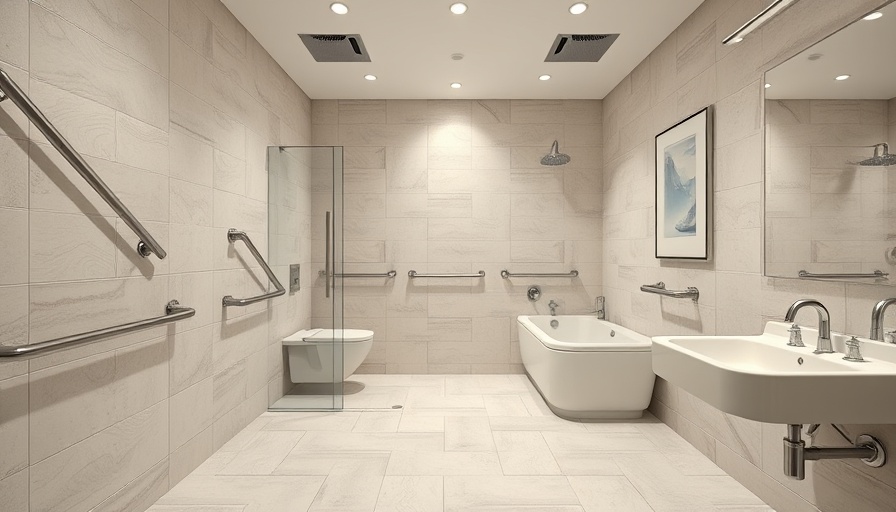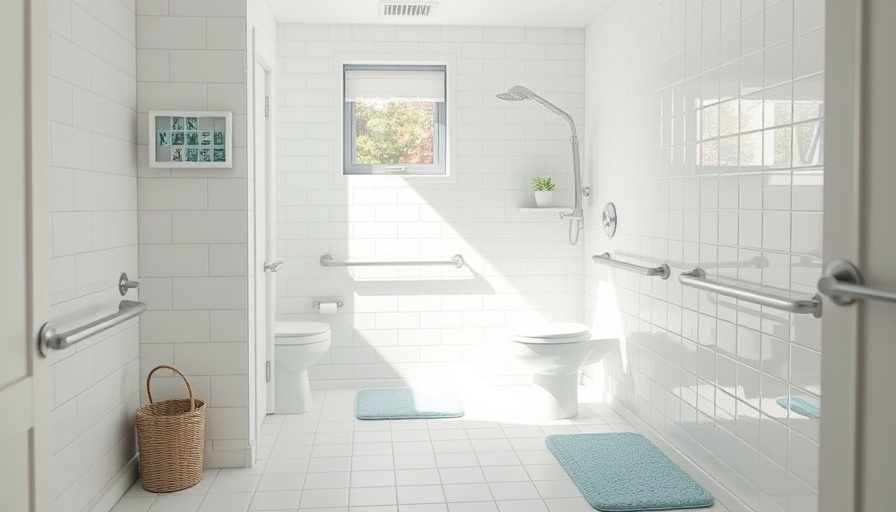
Understanding the Importance of Bathroom Safety
As our loved ones age or face mobility challenges, the bathroom can transform from a sanctuary of self-care into a space of potential hazards. Slips and falls are commonplace, making it crucial to address the risks head-on. According to occupational therapists, safety assessments are the first essential step towards creating a bathroom environment that minimizes these dangers.
Identifying Common Bathroom Hazards
Bathrooms present unique challenges, primarily due to wet surfaces and often cluttered layouts. A simple act, such as stepping out of the shower, can become a precarious maneuver if proper precautions aren’t in place. It's not just the slippery tiles; poorly placed items—like scattered towels or personal care products—can make navigating the space hazardous. Occupational therapists recommend conducting a detailed review of your bathroom setup to recognize and rectify these common pitfalls.
Practical Solutions for Enhancing Safety
Once hazards have been identified, utilizing practical solutions can significantly enhance safety. Non-slip mats are an essential addition, providing much-needed traction on often slick surfaces. Additionally, installation of grab bars in strategic locations—such as inside the shower or near the toilet—can provide the support needed for those with mobility challenges. It’s imperative these are expertly installed at the appropriate height and angle, tailored to the specific needs of the user, as inadequate installation can lead to more harm than good.
The Role of Proper Lighting in Preventing Accidents
When it comes to bathroom safety, lighting is just as significant as physical adaptations. Poor lighting can obscure potential tripping hazards, exacerbating the risk of accidents. Bright, even lighting is essential, especially in areas where care is performed, such as around sinks and mirrors. Incorporation of motion-sensor lighting can also help individuals who might regularly face mobility challenges, ensuring that they can navigate the space effortlessly at any time of the day or night.
Emotional Perspectives on Bathroom Safety Initiatives
Deciding to modify a bathroom for safety often brings mixed feelings. While these changes can empower independence, they can also evoke concerns about aging and loss of autonomy. It’s crucial to involve seniors in discussions regarding their safety needs, fostering an open dialogue about their preferences and anxieties. This process can not only improve their willingness to adapt to new enhancements but also affirm their sense of agency over their own lives.
Expert Insights & Practical Tips
To ensure successful bathroom adaptations, consider consulting occupational therapists who can provide expert insights tailored to individual needs. Their comprehensive assessments can identify unique hazards and suggest targeted strategies. Simple upgrades, such as installing a shower bench or handheld showerhead, can also promote safer bathing experiences. Encouraging family members to be part of the solution, perhaps by joining in a DIY project, can create a supportive environment where everyone feels confident in maintaining safety.
Conclusion: Take Charge of Your Bathroom’s Safety Today
Creating a safe bathroom environment is not just about installing equipment; it’s about fostering independence and ensuring peace of mind. Whether you’re looking for minor tweaks or major modifications, remember that every little step counts. Take charge today by assessing your bathroom for risks, and don’t hesitate to seek help from professionals to guide your renovations. Empower yourself and your loved ones with the knowledge and tools to transform your bathroom into a haven of safety.
 Add Row
Add Row  Add
Add 




 Add Row
Add Row  Add
Add 

Write A Comment